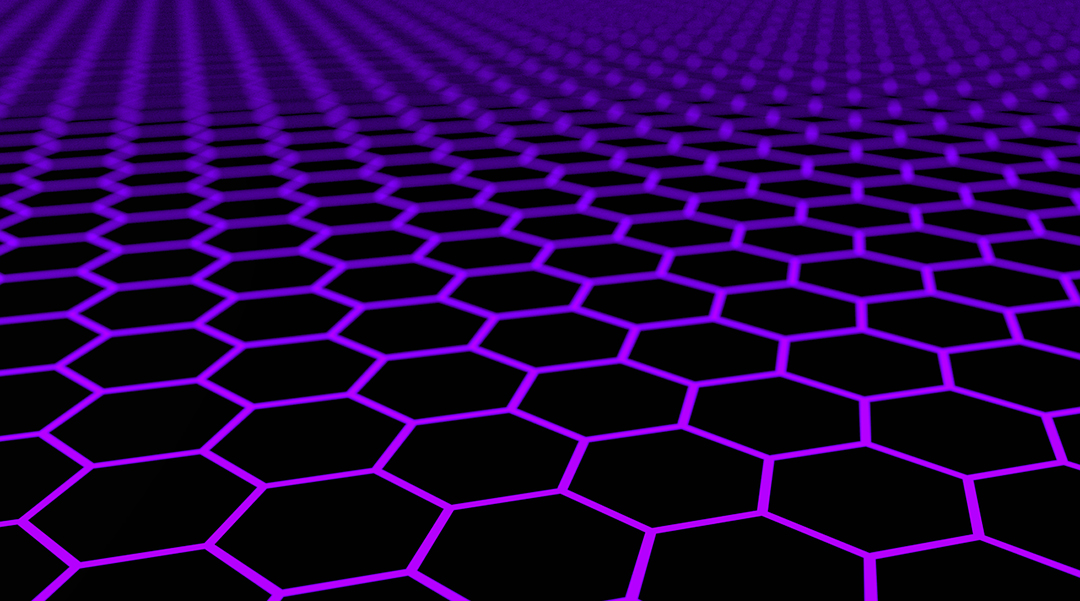Graphene is a material known for its many interesting properties. As a single layer of carbon atoms arranged in a hexagonal lattice, its tensile strength is more than 100 times greater that of steel, yet it is incredibly light, flexible, and transparent. In addition, graphene conducts electricity and heat better than almost all known materials.
Thanks to its unique properties, graphene has found application in many industries and technologies, from batteries to solar cells, flexible electronics, sensors, and many others. In practice, graphene sheets are usually flat or cylindrical. However, given the expanding scope of its application, it would be useful to understand what would happen if the geometry of graphene sheets became more complex — even if the immediate practical benefits of this change may not yet be known.
One potentially interesting geometry in solid state and condensed matter physics is a helicoidal surface, which is a strip twisted around an axis. One of the most famous examples of this geometry in nature is provided by the DNA double helix, which stores hereditary information in the cells of living organisms.
General relativity and graphene nanoribbons
Much of a material’s properties are governed by the electrons moving through it, so to uncover materialist physics, it is necessary to understand the dynamics of these fundamental particles.
These dynamics in a helicoidal graphene strip was theoretically explored in a recent study published in Annalen der Physik by a group of theorists from Peru and Brazil led by Angel Obispo of Universidad Tecnológica del Perú.
To date, the properties of electrons in graphene have been extensively studied. However, in the present study, the shape of the strip is quite complex, which forced Obispo and his colleagues first to modify the mathematical framework used to calculate the details of electrons’ dynamics.
Given that they worked with a curved geometry, it is not surprising that many of the mathematical tools they used were drawn from general relativity, which treats gravitational interaction as a curvature of spacetime, and is usually used to describe the physics of stars and galaxies or even evolution of the entire Universe.
This relationship between theories used to describe phenomena and interactions on completely different scales is quite common in physics; for example, it was recently used to study the propagation of waves in a superfluid liquid to describe the expanding universe.
Using their modified theory of electrons in graphene, the team was able to calculate many of graphene’s helicoidal strip properties, the most notable being the electron density. On a flat strip, electrons are distributed almost evenly, but physicists’ calculations show that on a helicoid surface, electrons prefer to be away from the axis of the helicoid, and the more the strip is twisted, the stronger this effect.
An applied magnetic field
In addition to the effect of strip twisting on the electron’s physics, the researchers were interested in the influence of a magnetic field, which often presents in practical applications. They applied a non-zero field directed along the axis of the helicoid in their theoretical description and discovered some interesting effects.
One of these is that the magnetic field appears to make graphene more fragile with their calculations predicting that under the influence of the magnetic field, the strip begins to break at a smaller twist angle of the helicoid.
As with any theoretical derivation, these findings must be verified experimentally. The authors of the study believe that their theory can be tested in the near future, and if the experiment confirms the correctness of their conclusions, then we’ll be able to delve more deeply into graphene’s properties and perhaps even find new applications for it.
Reference: C. C. Soares, A. E. Obispo, A. G. Jirón Vicente, and L. B. Castro, Effects of a Uniform Magnetic Field on Twisted Graphene Nanoribbons, Annalen der Physik (2023), DOI: 10.1002/andp.202200258
Feature image credit: nikitozawr on Pixabay

















